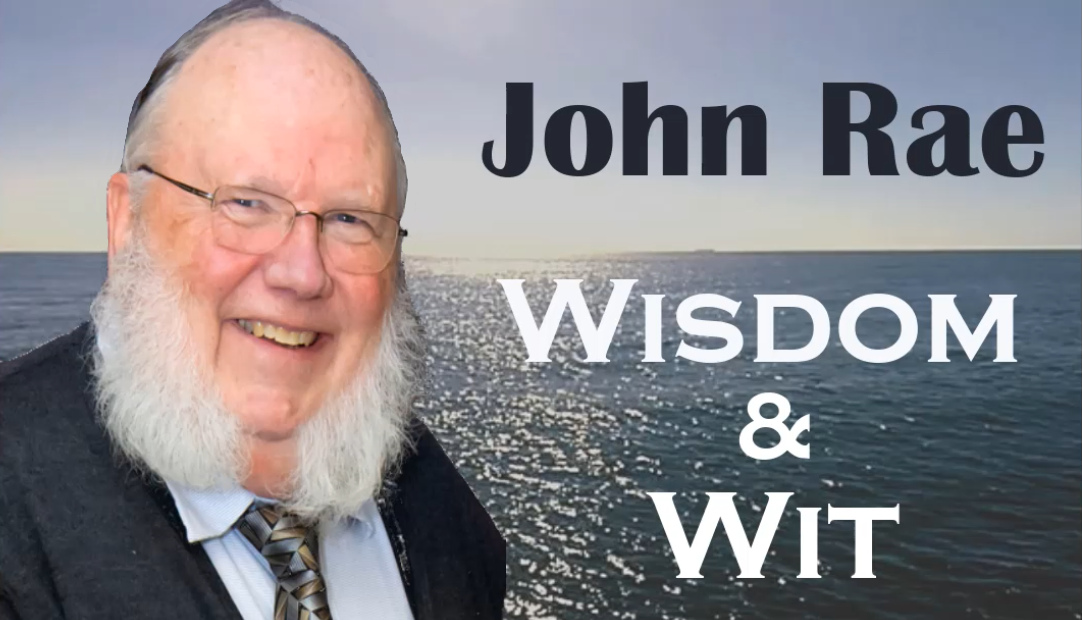In Luke 7:23 Jesus says: “And blessed is he whosoever shall not be scandalized in me.” Scandal comes from the Greek word skandalon which, in turn, comes from a term that means "to limp." What does a lame person resemble? To someone following a person limping it appears that that person is continually stumbling over his or her own shadow. A scandal is a stumbling block, it is an obstacle that impedes your way forward.
If you are aware of the stumbling block in your path, then you can just step over it. What makes a scandal, a scandal, is that you do not see it coming. It catches you off guard. A minute ago, you did not expect to be laying on the ground with a sore toe!
As per Luke 7:23, Jesus expects that, for some people, he will be a source of scandal, that he will be an obstacle that gets in the way of the fulfilment of what they desire for themselves. For example, Jesus was certainly an obstacle to the Scribes and Pharisees.
What do you do with a stumbling block? You do not want to get tripped up a second time, so you would toss it off to one side, you would reject it because you see it as being an illegitimate part of the path, that you are on. The Scribes and Pharisees certainly saw Jesus as a nuisance, something to be gotten rid of.
You see this in the story of the rich young ruler who came to Jesus and asked what he could do to obtain eternal life. When, after a bit of dialogue, Jesus told him to sell what he had and give the proceeds to the poor this proved to be too much of a stumbling block. It was an obstacle he could not get passed. He was into acquisitions and Jesus scandalized him by telling him that he should be into divestments.
When Jesus tells his disciples that he must go to Jerusalem, be rejected by the religious elders, suffer, and die, Peter gets in Jesus’ face, up his nose, and tells him “No way!”. The implication of Peter’s critique, of Jesus, was that suffering and dying was not part of the narrative of success. With Jesus’ grasp of the “11 magic herbs and spices” of reality the sky would be the limit, in Peter’s eyes. Jesus rebukes Peter and calls him “Satan”! Now that was a scandalous reaction that Peter was not expecting.
Both the rich young ruler and Peter were inhabiting a particular world. A world where there were winners and losers. Where the winners rose to the top and the losers sunk to the bottom. The rich young ruler was close to the top and Peter was close to the bottom. It is a world where envy, resentment and scapegoating were the backplane of the cultural operating system. It was this world that Jesus was talking about when he said, “My Kingdom is not of this world!”
Both Peter and the rich young ruler were living within a closed system, a culturally constructed fishbowl, where success was seen as becoming the big fish in the little pond. For the inhabitants of that fishbowl, Jesus comes along and offers them a life in their original natural habitat, the open ocean, but they have fetishized their cultural construct to the point where they are incapable of seeing anything outside their fishbowl and therefore treat Jesus as being a particularly toxic virus, to their well being. Jesus, then, needs to be rejected by being spewed out of their body politic. There is no room for Jesus at the “Cultural Inn and Spa”.
In Isaiah 6:10 there is a prophecy that Israel will reject their messiah due to spiritual blindness. At the blessing of Jesus when he was 8 days old, it says in Luke 2:34, “Then Simeon blessed them and said to his mother Mary, 'Listen carefully: This child is destined to be the cause of the falling and rising of many in Israel and to be a sign that will be rejected. Indeed, as a result of him the deepest thoughts of many hearts will be revealed'”
“falling and rising” is a good representation of stumbling and interestingly being rejected is listed as an integral part of the job description of the Messiah! In Acts 4:11 it says, “This Jesus is 'the stone you builders rejected, which has become the cornerstone.'” What is up with all this talk of rejection? How does a stumbling block become the cornerstone of the edifice?
To explain this, let us take a side trip into the world of the “word”. You wouldn’t put a recipe book on your bedside table just to read a few recipes before you go to sleep, each night. To fully honour the meaning of the words in the book you must actually bake something. You must perform the recipe. This combined act of reading and performance has a name. It is called “Liturgy”. The Gospel of John presents the activities of Jesus as a liturgy of incarnation and consummation. Fr. Raymund Schwager explores this liturgical theme in his book, “Jesus in the Drama of Salvation”.
What does the drama of Christ’s Passion, Crucifixion and Resurrection reveal? A cultural construct (the fishbowl life) has a pyramid structure with the power, of that construct, residing at the top of the pyramid in, say, the King or the cultural elite. Life on the pyramid consists of trying to “climb to the top”, sometimes by what ever means necessary. This structure promotes the stratification of people into the oppressed and the oppressors with all the violence that goes along with that. In the Old Testament, Egypt had both the physical pyramids and had a hierarchical culture built on the foundation of an oppressed class (the Israelites).
Within the first century cultural context, in the real-life drama of the Crucifixion, Jesus simultaneously plays both the part of the Messiah (the Son of God, the Second Person of the Trinity), at the top of the pyramid, and the criminal being executed outside of the city gates, the person at the bottom of the pyramid! Through this paradox, Jesus reveals that he is both fully God and fully man! Think of Jesus’ words in Matthew 25:40, “And the King will answer and say to them, ‘Assuredly, I say to you, inasmuch as you did it to one of the least of these My brethren, you did it unto Me.’”
By his historical actions, Jesus reveals the inner workings of the system that creates the fear and violence and the false structure of values, that was oppressing humankind. From the cross, Jesus performs a liturgical autopsy, He slices open, and lays bare the ‘the’ false cultural narrative (the lie of the Devil). Think of Hebrews 4:12, “For the word of God is alive and powerful. It is sharper than the sharpest two-edged sword, cutting between soul and spirit, between joint and marrow. It exposes our innermost thoughts and desires.”. Think back to Simeon’s prophesy at the presentation of Jesus, in the Temple.
That revelation is the source of our salvation from the “world”. Think of the movie, “The Wizard of Oz”. When Toto pulls back the curtain, he reveals that the "The Great and Powerful Oz", who held land in fear, was just an old guy with some noise makers! But the fear that the Wizard created was real fear.
When, on the cross, Jesus gives up his Spirit, and says, “It is finished.” The veil in the Jerusalem Temple is rent in two. Everything is out in the open at that point. This scene, from the Wizard of OZ, has some tethers of continuity to that episode. Here, Toto, a totally unlikely hero, pulls back the veil and reveals the lies and deceit that were operating at the functioning centre of the culture, in the Land of OZ.
What replaces the fishbowl life? Jesus instituted the Church where his resurrected body, in the form of the Eucharistic sacraments, is the cornerstone of the life of the Church. It is a culture not built on fear, violence, and resentment but on caritas. “By this all people will know that you are My disciples: if you have love for one another.”, John 13:35.
Fast forward to 2021…There is now a fresh outbreak of the “Fishbowl Fetish”. It is called Critical Theory. There are a few denominations within the secular religion of Critical Theory, for example: Race Theory, Gender Theory, Queer Theory and Fat Theory.
Critical Theory’s “deposit of faith” is a bit of a smorgasbord of Marxist and post-modern philosophies. From their post-modern provenance, they get their dogma that “there is nothing outside the fishbowl”. So, any talk of Jesus, who is certainly outside the fishbowl, must be rejected, by default. Ironically, by engaging in this up-front rejection they are actually baking in the seeds of the ultimate “deconstruction” of their cultural casserole.
The modern philosopher Friedrich Nietzsche said, “…morality begins, when ressentiment itself becomes creative and gives birth to values.” Critical Theory buys into this. Their version of John 13: 35 would be: "By this all people will know that you are Critical Theorists: if you have resentment for those with perceived privilege.”
They have adopted the moral imperative that something must be done about the stratification of “privilege” within the fishbowl hierarchy. There must be some “equity” constructed within the system so that there are no longer the oppressors and the oppressed but an “inclusivity” of cultural groupings. There are indeed inequities, in the world, so, at a surface level, their analysis has a certain moral attraction.
From their Marxism they have inherited, “If you are going to make an omelet then you have to be prepared to break a few eggs”. This opens the door to violence, shaming and cancel culture as the legitimate tools of the “inclusive revolution”. The first egg that they are out to crack is the Church, because, for them, the Church is a reservoir of “false consciousness” that needs to be drained. When, in reality, the Church is the source of the waters of judgement (Christ’s tough love).
Jesus’ crucifixion has revealed critical design flaws that impact the structural integrity of the “M.V. Critical Theory” (its no Noah’s Ark). In the storms of life, it will deconstruct and sink, at some point, and slip under the waters of judgement. The hyper activities of Critical Theory are akin to rearranging the deck chairs, on this doomed vessel, so that depending on your denomination, you will want either the blacks or feminists or trans or queers or fatties sitting in the front row of chairs, closest to the gunwale!
The individuals caught up in this fetish need to discover the love of Jesus and that their sense of moral imperative is not fulfilled in the fishbowl life but in the abundant life, promised by Jesus.
As an end note, we generally hear the Gospel presented to us within the context of “personal piety”, ie: “Have you been saved?”, “Have you invited Jesus into your heart?”. What I’ve attempted to do in this essay is to compliment that approach and articulate the Gospel from within the context of a “cultural anthropology”, looking at how culture is structured and how it works. The Gospel is multi valent so that it able to speak truth to us, both in the microcosm of our personal life as well as in the macrocosm of our cultural life together.






